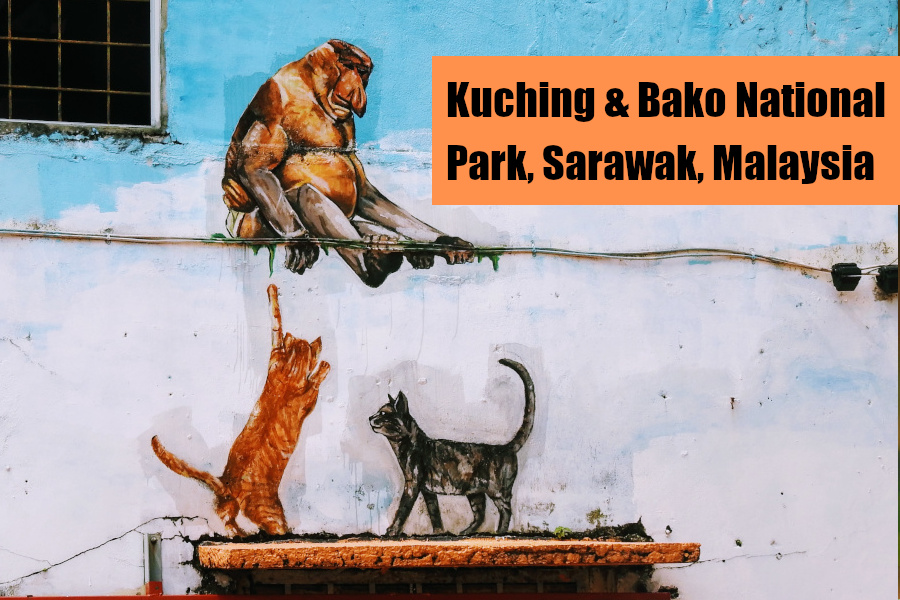When we landed in Kuching the first thing we noticed was how hazy the air looked outside. It was noticeably hazy with a slight odor of smoke. The air quality had been perfectly fine in Mulu, which is also in the same Sarawak state of Malaysia as Kuching, so this took us by surprise. After reading a bit of online news and talking to some locals, we learned that the haze was due to fires intentionally set in Indonesia to clear land for agriculture. The haze has become an annual occurrence around this time of year. The air quality index in Kuching was well over 200 while we were there, which falls in the ‘very unhealthy’ range. We had purchased some pollution filtering face masks in Indonesia so we wore them while outdoors to lessen the chances of negative health effects from the pollution in the air. Many local people from adults to children were also wearing masks outdoors. The government distributed face masks and some schools were temporarily closed due to the poor air quality. We were there for less than a week so we could deal with it but the conditions cannot be healthy for the people who live there.

Despite the haze issues we loved the city of Kuching. The city has a beautiful waterfront along the Sarawak River. The Darul Hana Bridge is an S-shaped pedestrian bridge that connects the north and south sides of the city. The bridge has viewing platforms and towers that resemble hornbill birds. Sarawak is nicknamed the “Land of the Hornbills” and the birds are important cultural symbols in the region. The waterfront comes alive in the evenings with free musical laser and fountain shows, sidewalk cafes, food stalls, street performers, live bands, and many vendors.
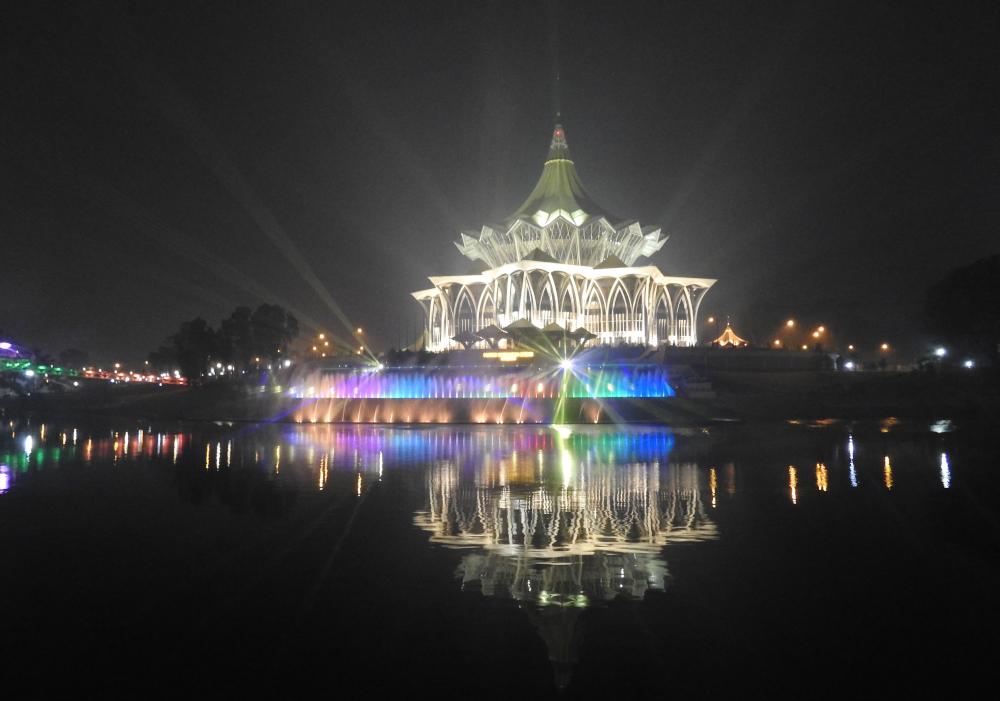
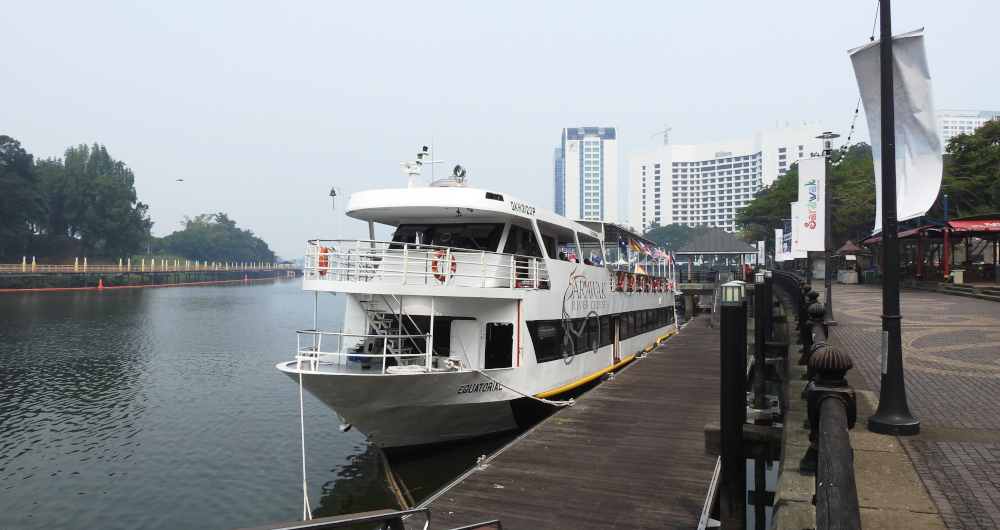
One evening we took the Sarawak Sunset River Cruise which lasted about an hour and a half and provided a pleasant overview of the history behind some of the sights along Kuching’s waterfront. The cruise also included a cultural performance and some refreshments.


Kuching is known as the city of cats and has a cat museum, cat statues, cat-themed public art, and plenty of cat-themed souvenirs. Unfortunately, the cat museum was closed during our visit because of a public holiday but we had fun walking around town and admiring the kitschy cat statues. In Malay, the word ‘kucing’ means ‘cat’. There is also a good deal of interesting street art in Kuching and some of it is cat-themed of course.

We found some great restaurants while in Kuching. At Indah Cafe we enjoyed the local dish of nasi lemak with pendang tempeh and shakes made with homemade coconut ice cream, coconut water, and vegan chocolate syrup. At Fig Tree Cafe we enjoyed their vegan version of lui cha, a local rice-based dish with peanuts, tempeh, and veggies cooked in a tea broth. There are also many markets in town with food stalls that offer endless food options.

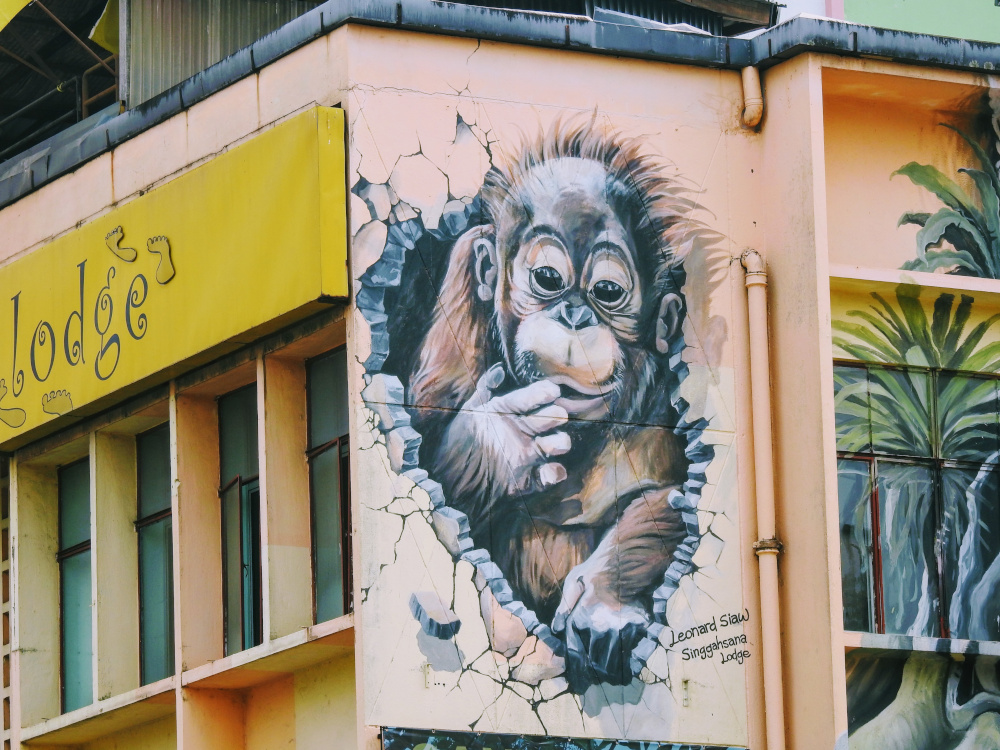

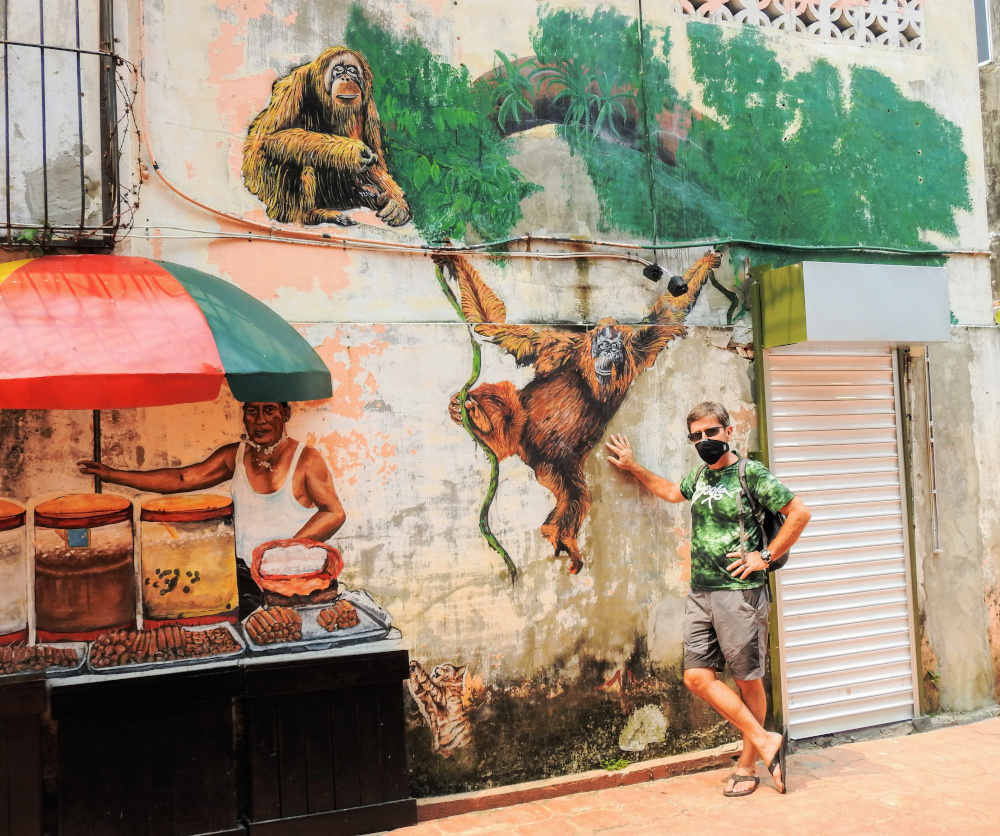
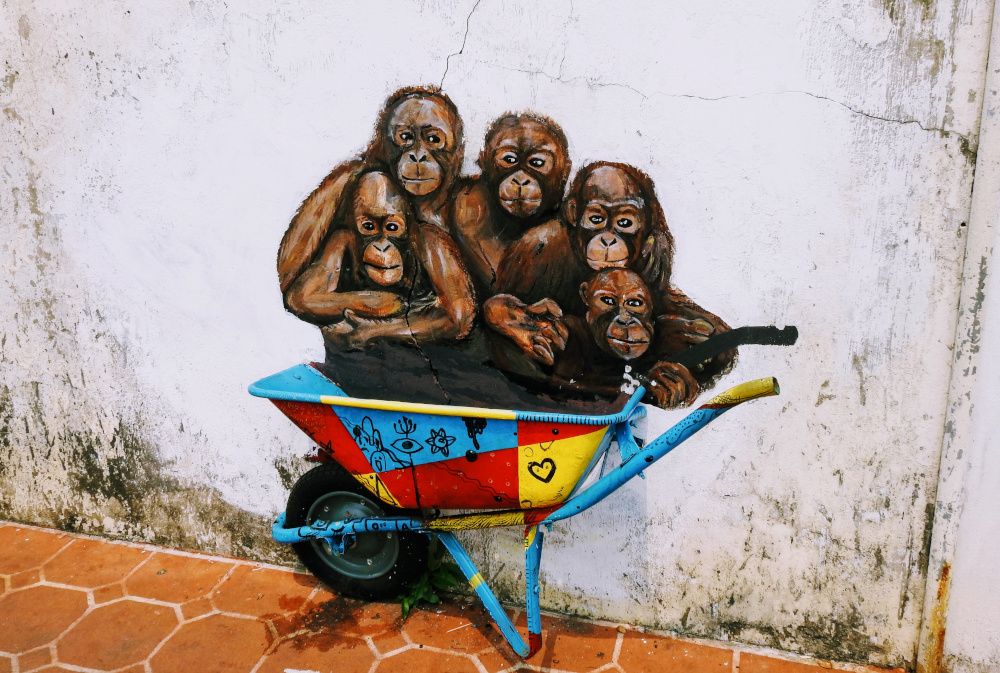

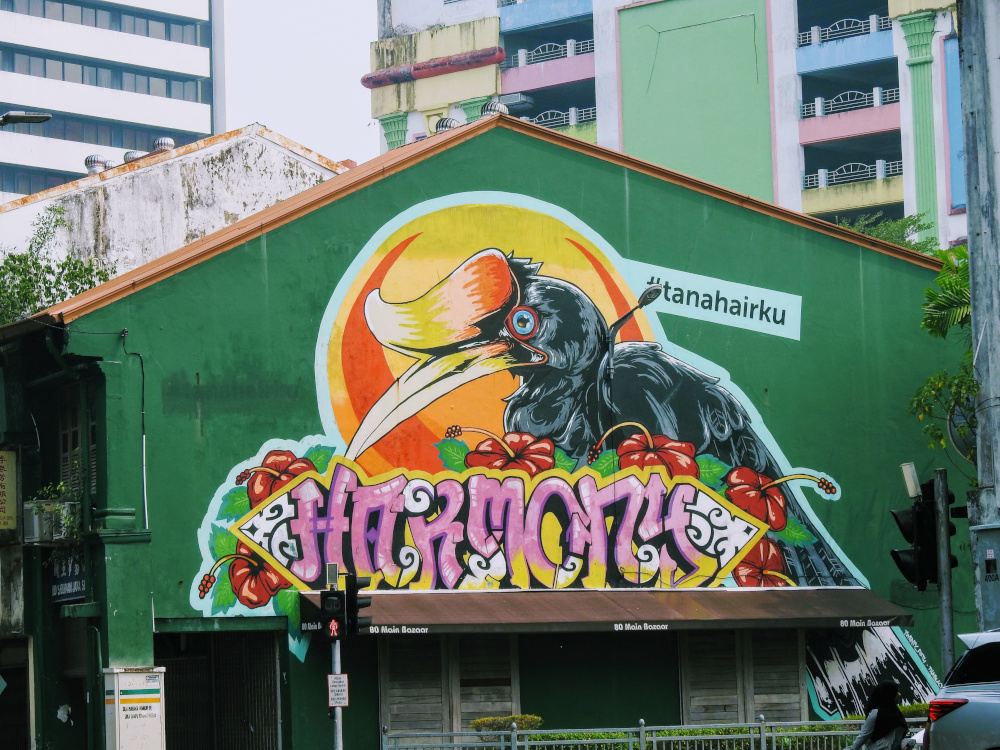

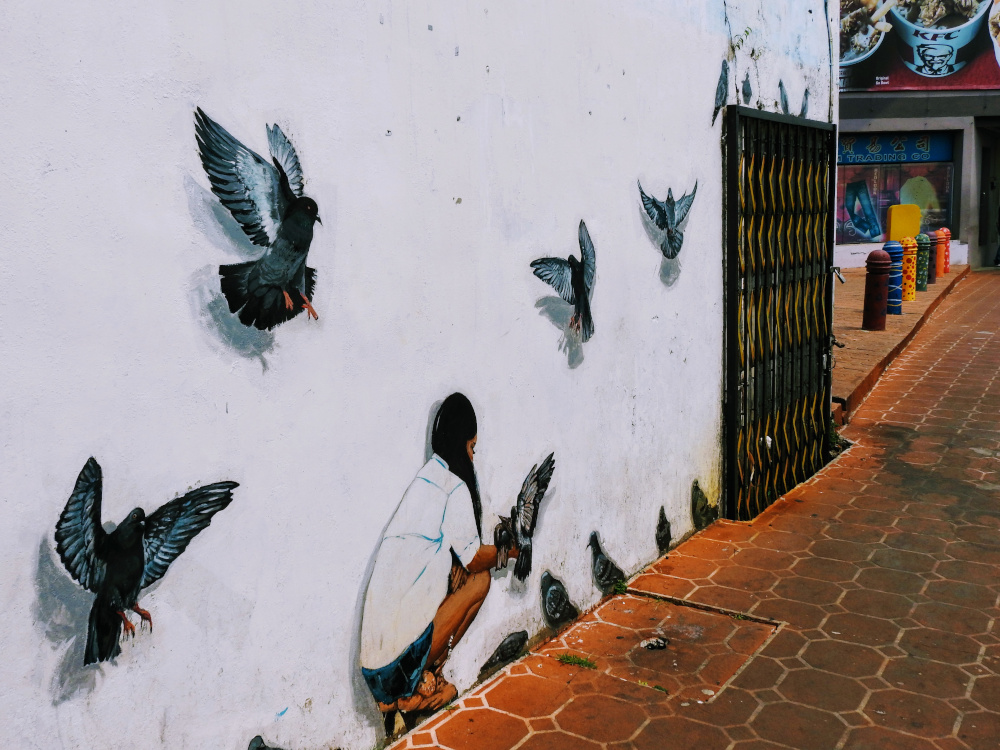
While in Kuching we also had massages at the Alternative Therapy Centre which employs blind massage therapists who are fully trained and licensed through a special program for the visually impaired. The centre happened to be a few doors down from our hotel so we walked in and booked appointments for the same day. The space was quite basic but the massages we received were of outstanding quality and they were very affordable.
We spent three nights in Kuching city proper, and one night in nearby Bako National Park.We booked an overnight visit to Bako in advance through the company listed on the park’s website. To reach Bako we were picked up at our hotel and driven about 45 minutes to the jetty in Bako Village, where we met our guide Joel, who has been a park guide at Bako for more than thirty years. From there we took a 20-minute boat ride with our luggage and our guide. When we reached the beach area at Bako we had to take off our shoes and carry our luggage barefoot through the water and across the beach to reach the park headquarters reception area.
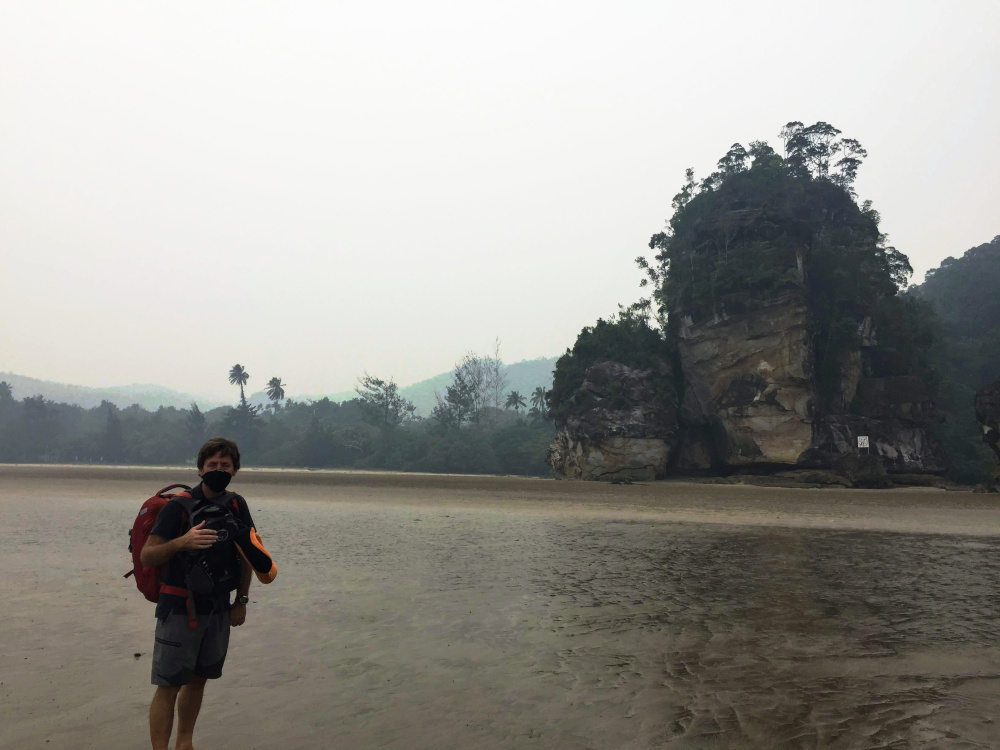
The park is the oldest national park in Sarawak and also the smallest. The air was still quite hazy at Bako and the visibility was poor so it looked a bit different than all the beautiful photos we had seen before coming there. The poor air quality also meant we would be avoiding any strenuous hiking as I already had a cold when we arrived and did not want to risk having any further health issues. We wore face masks while outside as did our guide.
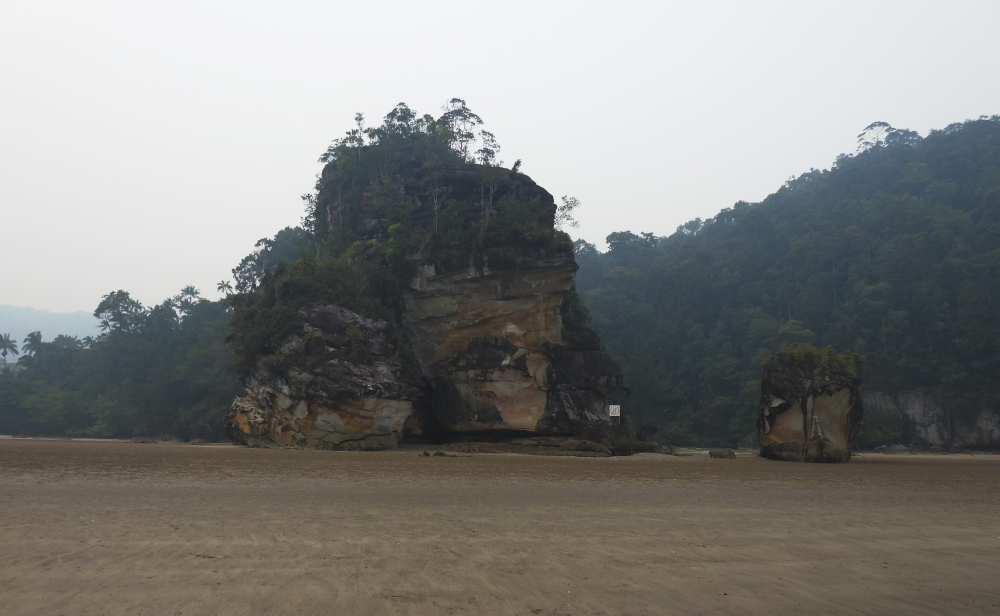
Despite the haze we enjoyed Bako and thanks to our knowledgeable guide we spotted a great deal of wildlife, including flying lemurs, wild boars, silver leaf monkeys, blue crabs, fiddle crabs, long tailed macaques, mudskipper fish, and a Bornean keeled pit viper. Rob went on a forest night walk which I skipped since I had a cold and was feeling tired. On the night walk they saw a painted mock viper, a tarantula, and scorpions (yikes). Bako is also home to around 275 rare proboscis monkeys which are found only in Borneo. We saw quite a few of them hanging around the park. Usually they were sitting in the trees eating or napping but we did see a few on the ground as well.
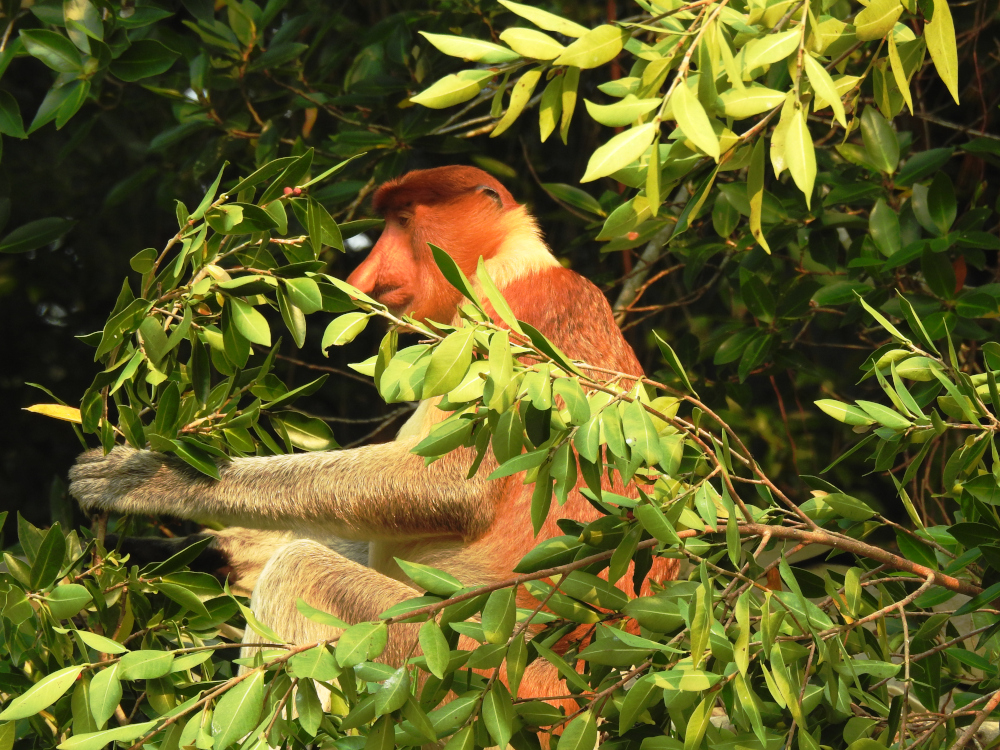

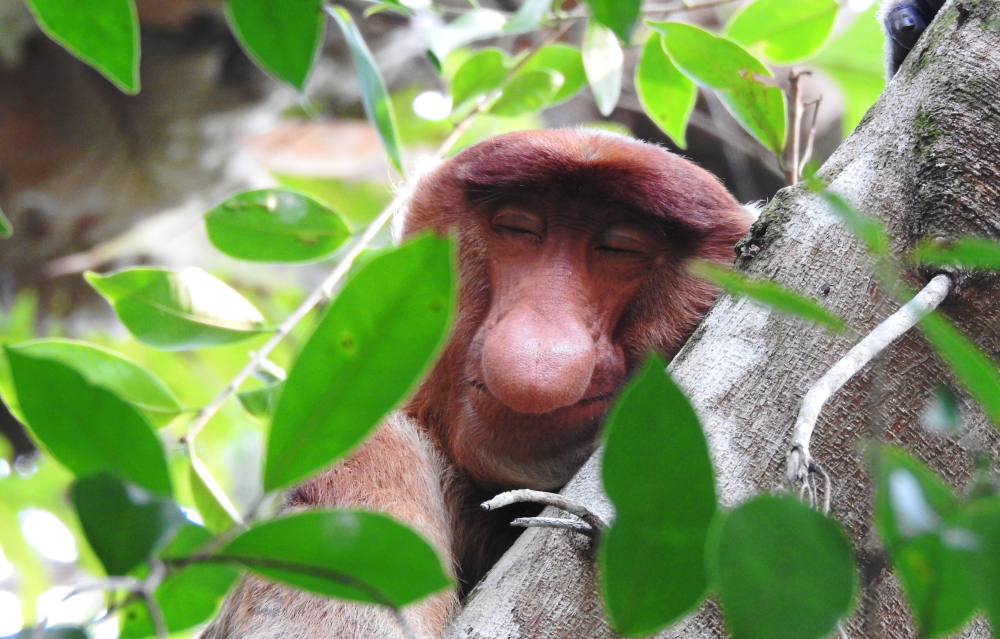
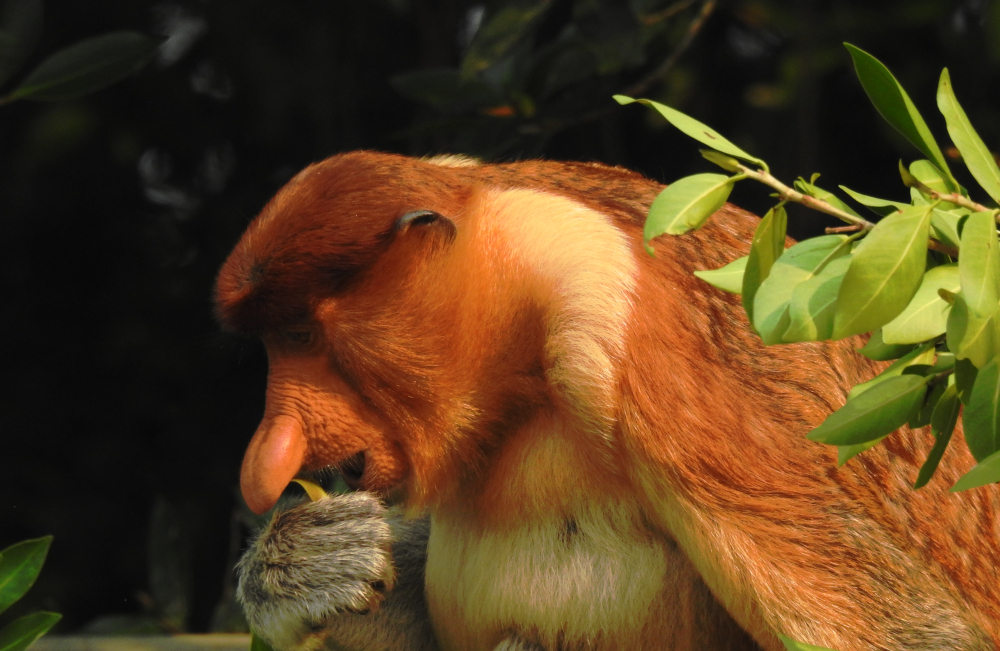
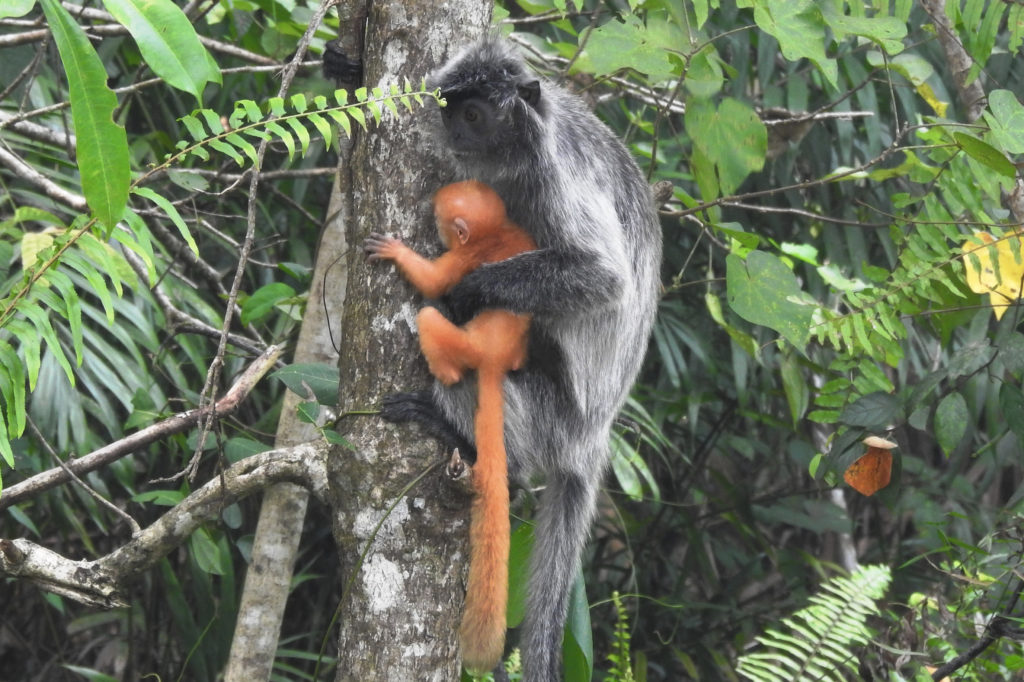

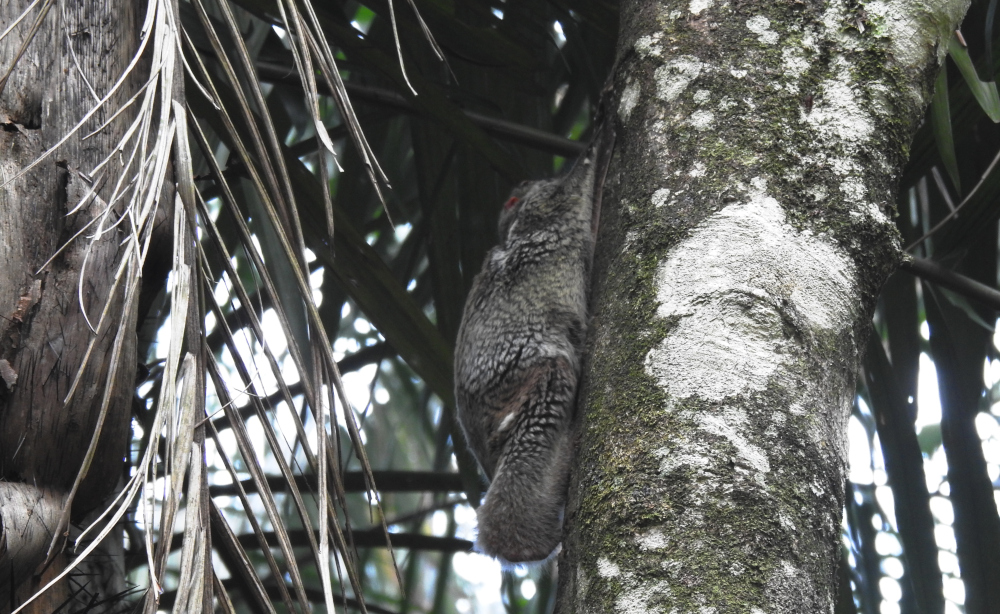

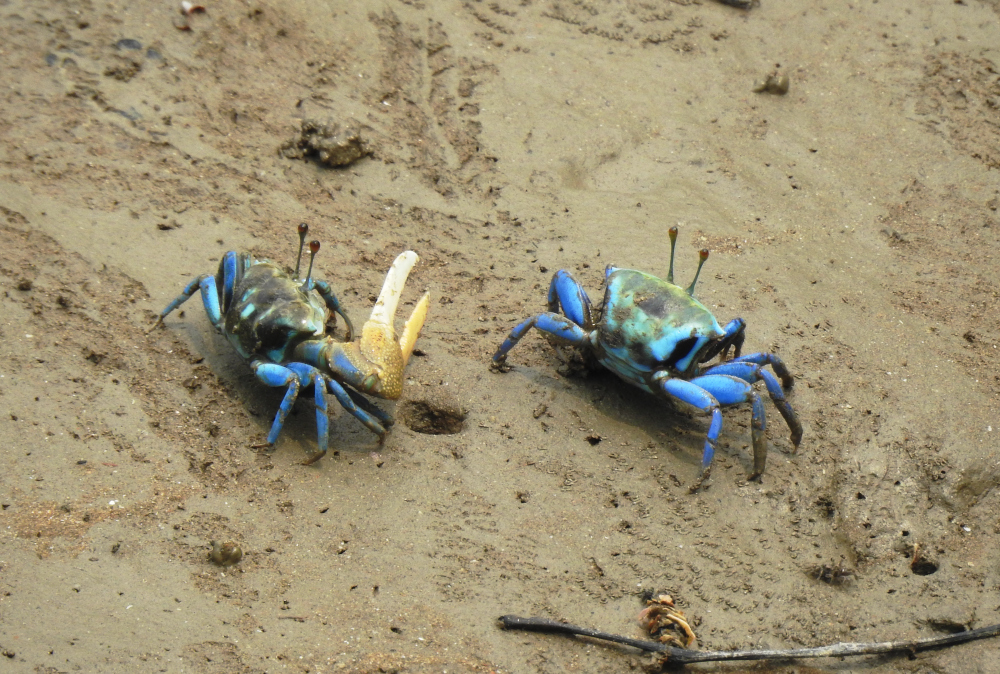

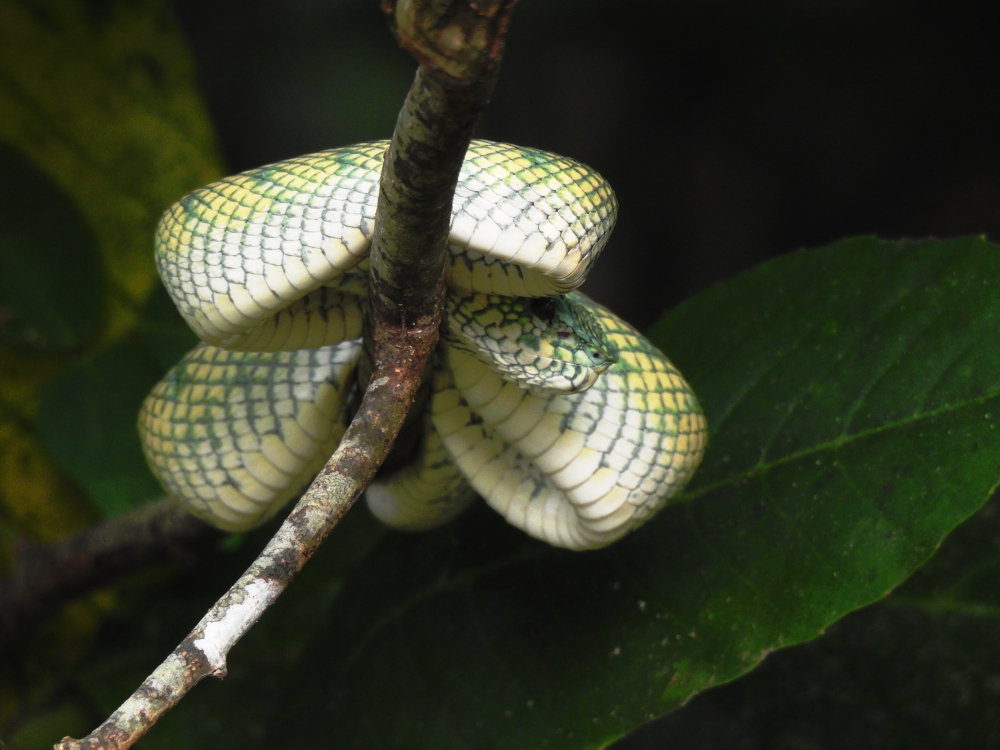
We stayed in some of the park’s on-site lodging, which was rustic with concrete floors and reminded us of a bunker. Our room was bare and basic with four twins beds and not much else for furnishings. We had no air conditioning and no hot water but we did have a fan and a private bathroom with running water and electricity thankfully. The park has a cafeteria where all meals are served buffet style. The food was basic but there were some vegan options and usually we ate a meal of sauteed veggies over rice. Some of the other accommodation buildings at Bako were in such states of disrepair that they were no longer being used. The buildings and facilities at Bako generally seemed old and rather tired. There is an extensive network of lengthy trails in the park that would be fun to explore further under better weather conditions.

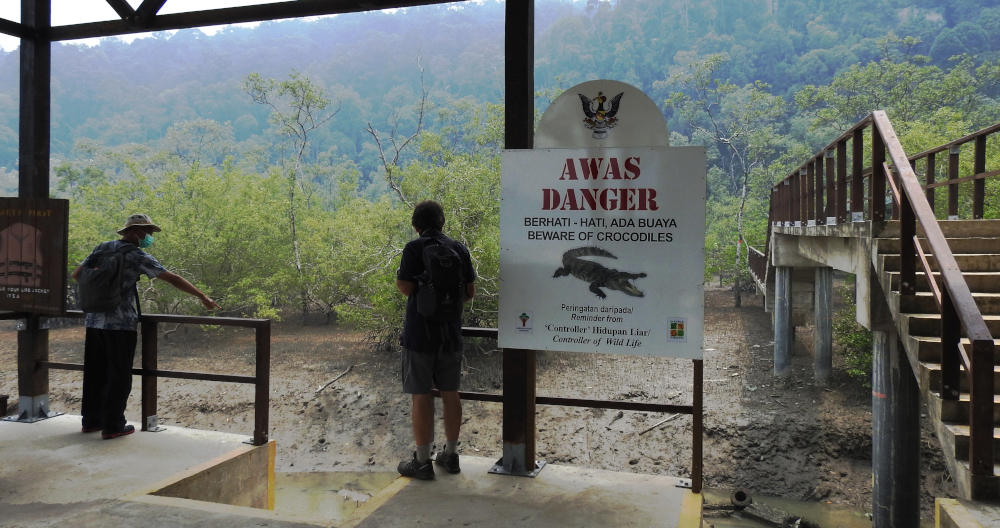
The sandstone rock formations around Bako are quite beautiful even though we could not see them all that well due to the haze and poor visibility. Crocodiles live in the water around Bako so swimming is not recommended. Just by chance we picked probably the worst possible time of year to come to Bako when the haze was at its worst but we still enjoyed our brief visit and it was quite a unique experience staying there overnight. Our guide definitely made the trip to Bako a worthwhile experience.

